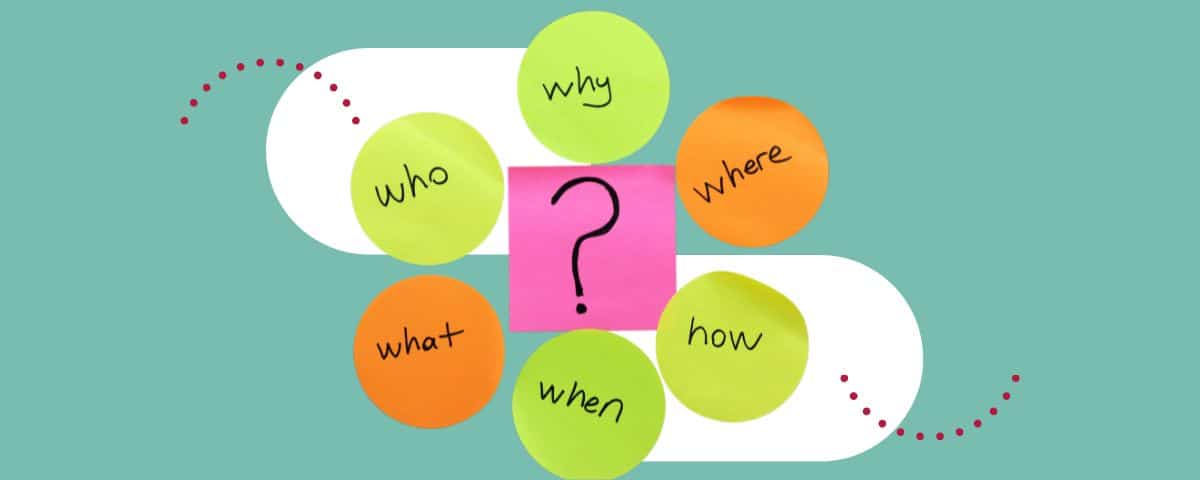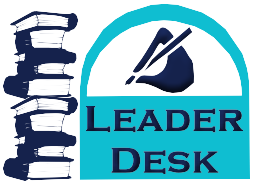What is a Mind Map? Uses, Benefits, and How to Start
Did you know that using tools like mind maps can help you work 23% more efficiently? But what is a mind map? A mind map is a practical way to organize your thoughts, ideas, and information. It works in sync with how your brain naturally connects ideas. By visually linking concepts, mind maps work in […] The post What is a Mind Map? Uses, Benefits, and How to Start appeared first on Chegg India.

Did you know that using tools like mind maps can help you work 23% more efficiently? But what is a mind map? A mind map is a practical way to organize your thoughts, ideas, and information. It works in sync with how your brain naturally connects ideas. By visually linking concepts, mind maps work in sync with how your brain naturally connects ideas.
Mind maps help unlock creativity, improve memory, and break down complicated topics by linking concepts visually. Whether you’re brainstorming, planning a project, or studying for a test, this method offers a structured but flexible way to solve problems. People across professions, including students, entrepreneurs, and even busy professionals, use mind maps to turn scattered ideas into clear, actionable plans. Studies also show that visualizing information makes it six times easier to remember.
In this blog, you’ll learn what mind maps are, how they can help you, and the simple steps to create one yourself. Ready to give it a try? Let’s start by seeing how mind mapping can make your life easier!
What is a Mind Map?
A mind map is a simple tool that helps you break down complex ideas into smaller, easier-to-understand parts. Your main idea is at the centre, with branches extending outward to show related topics. Each branch uses keywords, colours, or even small images to make the information stick. This makes it easier for you to remember and understand what you’re working on.
So, what is mind mapping? It’s incredibly versatile and perfect for brainstorming, project planning, exam preparation, or setting personal goals. Mind mapping means connecting ideas naturally, turning messy thoughts into a clear and organized structure. With a mind map, you can simultaneously see the big picture and the small details.
They also boost creativity. Since they’re visual, they engage the part of your brain that handles imagination. This sparks fresh ideas and helps you think in new ways. Unlike traditional linear notes that feel rigid, mind maps let your thoughts flow freely and encourage creative problem-solving.
Core Components of a Mind Map
A well-designed mind map is a collection of words and lines and a strategic tool that organizes your thoughts. Let’s break down the key components and their value:
- Central Idea
At the heart of any mind map, the central idea represents the topic you’re exploring. Starting with a single, well-defined concept helps focus your brainstorming process and gives your map a clear purpose. It is the anchor that keeps all the connected ideas relevant and aligned.
- Branches
Branches radiate outward from the central idea, each representing a subtopic or related concept. Think of them as the veins through which your ideas flow, providing structure while keeping the connections organic and flexible.
- Keywords
Instead of whole sentences, mind maps prioritize concise, impactful keywords. These keywords are like signposts, capturing the essence of an idea without overwhelming the visual space, which promotes focus and quick comprehension.
- Colors & Images
Colours bring life to a mind map, while images act as memory triggers. Assigning distinct colours to branches and incorporating icons or symbols can make your map more engaging and memorable. Studies suggest that visuals significantly improve recall and understanding.
Characteristics of Mind Mapping
Mind mapping is a simple yet powerful way to organize thoughts, spark creativity, and improve memory. Let’s break down what makes it so compelling:
Non-linear Structure
Mind maps don’t follow a rigid format. Instead, they branch out in a natural, non-linear way. This design works the same way your brain processes ideas, letting your thoughts flow freely without getting stuck in a specific order. This approach helps you uncover connections between ideas that you might otherwise miss.
Central Theme
Every mind map starts with a clear central idea at the centre. From there, all the branches connect back to this central theme. This keeps everything focused and prevents you from going off track. Even when dealing with complex topics, this structure makes it easier to stay organized and think clearly.
Visuals for Better Memory
Mind maps use visuals like colours, symbols, and images to make information stick. Your brain loves visual information, so using these elements helps you remember things more easily. Studies even show that mixing visuals with text improves understanding and recall. So, a mind map isn’t just for jotting down notes—it’s a great way to learn and remember more effectively.
Flexibility
Mind maps are flexible and grow with your ideas. If you need to add new information or rearrange concepts, they’re easy to update without losing their overall structure. This adaptability makes mind maps perfect for brainstorming, planning, or solving problems when things are constantly changing.
Benefits of Mind Mapping
Mind mapping is more than just a tool for getting things done. It’s a powerful way to spark creativity, simplify tasks, and make learning more enjoyable. Here’s how it can make a difference in your personal and professional life:
- Simplifies Complexity
When ideas and tasks pile up, it’s easy to feel overwhelmed. Mind maps help by breaking complex ideas into simple, visual pieces. This makes it easier to see the bigger picture and focus on what needs to be done. Doing so clears your mind and helps you make better decisions.
- Improves Learning and Retention
Did you know that people process visuals much faster than text? Mind maps take advantage of this by turning your notes into visual diagrams. Whether studying a challenging subject or preparing for a presentation, mind mapping helps you remember more and connect ideas faster.
- Sparks Creative Thinking
Creativity needs room to grow, and mind maps give you just that. They let you link ideas freely, encouraging new ways of thinking. It’s an excellent tool for brainstorming and finding fresh solutions. Mind mapping enables you to turn your cluttered thoughts into clear, creative ideas.
- Enhances Productivity
Mind maps help you organize tasks, prioritize them, and communicate complex ideas. They give you a clear structure to tackle projects, ensuring everyone on your team knows what they need to do. The result? More efficiency and better outcomes.
Mind Mapping for Students
What is a mind map for students? Mind mapping is a tool that can really boost your exam prep. It helps you turn complex topics into easy-to-understand visuals. This makes it simpler to break down difficult information and remember it.
Unlike regular note-taking, mind maps show how ideas connect. You can see the relationship between concepts, making understanding them more manageable. When you connect the dots, you can recall the information better during exams.
Another benefit is that mind maps work with how your brain naturally processes images. Research shows that visual learning helps you remember more than just reading text. A mind map’s colours, shapes, and branches act like triggers to help you remember important details when needed—like during exams.
Mind Mapping in Business
Mind mapping is a great way to organize ideas and ensure strategies work smoothly in business. Whether brainstorming, planning projects, or mapping out business strategies, mind maps give you a clear picture of your goals and the steps needed to achieve them.
Mind mapping also helps teams stay on track. Clearly showing goals, responsibilities, and timelines keeps everyone aligned, leading to better teamwork and faster decisions. It shows how everyone’s contributions fit into the bigger plan, creating a shared sense of purpose.
Mind maps also spark creativity. They let your mind wander and make connections you might not have thought of in a more structured process. This helps you develop new solutions, especially when tackling problems or planning new strategies.
How to Create a Mind Map
Mind maps help you organize your thoughts and ideas. Using a simple method, you can turn complex concepts into clear visuals. This makes them easier to understand and remember.
- Start with a Clear Central Idea
Place your main idea in the centre of your page. This is your map’s focal point, helping you organize your thoughts. Everything else will branch out from here, so make sure it’s clear and straightforward.
- Add Branches for Related Topics
Next, draw lines from the central idea to create branches. Each branch should represent a key topic connected to your main idea. These topics are the building blocks that will guide your thinking.
- Use Visuals to Make It Clearer
Add keywords, symbols, or images to your mind map. Visuals help break down complex ideas and make them easier to remember. A simple picture or symbol can bring new ideas to life and make it easier to connect the dots.
- Expand with More Details
Once the main branches are in place, add more details. This helps you explore each topic fully and keeps everything organized. The more specific you get, your overall picture will be more precise.
Tips for Beginners
Starting with mind mapping may feel overwhelming. These simple tips will help you get started. You’ll see how mind mapping can boost both your learning and creativity. If you’re just getting started with mind mapping, keep these tips in mind:
- Stick to a Clear Central Idea: This is the backbone of your map. A clear idea makes it easier for everything else to fall into place.
- Group Related Topics Together: Link ideas that belong together. This will help you see connections and make your map a helpful tool for problem-solving or brainstorming.
- Simplify with Visuals: If something feels complicated, add a picture or symbol to make it easier to understand.
Tips for Effective Mind Maps
To get the most from your mind maps, follow these proven strategies. These tips will help you create maps that are clear and useful. They’ll also improve your productivity and problem-solving skills. Take your mind maps further with these strategies:
- Be Consistent with Colors and Lines: Use different colours or line styles to keep your map organized. This makes it easier to follow and understand.
- Use Images and Symbols to Help You Remember: Add images or icons to key ideas. This helps your brain connect information and recall it more easily.
Mind Mapping Tips for Beginners
If you’re new to mind mapping, these tips will help you get started. You’ll be able to create more apparent and more effective maps right from the beginning.
- Start with a Clear Central Idea: Your central idea is the foundation of your map. Begin with a simple, straightforward concept. This focus keeps your map organized and helps you stay on track.
- Group Related Ideas Together: Group similar ideas together after establishing your central idea. This organises your thoughts and shows how the ideas are connected. It turns your mind map into a powerful tool for brainstorming and problem-solving.
- Use Visuals to Clarify Complex Ideas: Don’t hesitate to add pictures, icons, or symbols. These visuals simplify complex concepts and make them easier to understand and remember.
Advanced Mind Mapping Strategies
Once you’re comfortable with the basics, try these strategies to improve your mind maps.
- Be Consistent with Colors and Lines: Use different colours and line styles to separate ideas and categories. This makes your map more straightforward to follow. Consistent visuals make your mind map functional, appealing, and easy to navigate.
- Add Images and Symbols to Boost Recall: Including relevant images or symbols next to key ideas helps you remember them better. This taps into your brain’s natural ability to connect visuals with memory, making it easier to recall and use information later.
Examples of Mind Maps in Various Contexts
Mind maps are simple yet powerful tools. They break down complex information into easy-to-understand pieces. This makes it easier for you to remember things, improve your creativity, and boost your overall understanding. Let’s look at how you can use mind maps in different situations to improve learning and productivity. Below are some mind map design ideas you can use:
Mind Maps for Students
Mind maps help students grasp subjects like history. You can map out important events, key figures, and their impacts. This lets you see how everything connects, making remembering the material easier and preparing for exams faster.
Mind Maps for Business
In business, mind maps can change how you plan projects. You can see the whole picture in one place by visualizing tasks, deadlines, resources, and team roles. This clarity helps your team stay focused, saves time, and ensures nothing is missed.
The Only Map to Success
Now that you know what a mind map is, let’s recap. Mind mapping is an excellent way to organize your thoughts, boost creativity, and tackle challenges more effectively. This technique helps you visually connect ideas, simplify problem-solving and keep you focused on your goals. Mind mapping is a powerful tool whether you’re studying for exams, planning a project, or setting personal objectives.
The mind mapping technique brings clarity and more profound understanding while enhancing efficiency. Structuring tasks visually allows you to break down complex problems into smaller, manageable steps. What is a mind map, if not a more brilliant way to work? It helps you achieve more with less effort, empowering you to work smarter, not harder.
FAQs
1. What is a mind map and how does it work?
A mind map is a simple visual tool for organizing information. You start with a central idea and then create branches that connect key concepts. This setup lets you quickly see how everything fits together, making it easy to understand and remember details.
2. How can mind mapping benefit students?
Mind mapping is a game changer for students. It turns complex study material into something easy to follow. Linking ideas and breaking things down into smaller parts helps you understand and remember information better. It’s especially helpful when studying for exams because it makes learning more efficient.
3. Are there specific tools for digital mind mapping?
Yes, there are several digital tools to make mind mapping easier. MindMeister, Miro, and Creately are great options. These platforms let you customize your maps and work with others in real time, making sharing ideas or collaborating in groups simple.
4. What are some examples of mind maps for business use?
In business, mind maps can be a big help. They’re great for brainstorming, planning strategies, and managing projects. Mind mapping examples include organizing tasks, timelines, and resources. This keeps everyone on the same page, improves focus, and boosts productivity.
5. How do colors and images enhance a mind map?
Adding colours and images to a mind map isn’t just for fun—it helps with memory. Colours make it easier to tell ideas apart, and images turn complex concepts into something more straightforward to remember. This approach enables you to understand and remember information more effectively.
The post What is a Mind Map? Uses, Benefits, and How to Start appeared first on Chegg India.



























